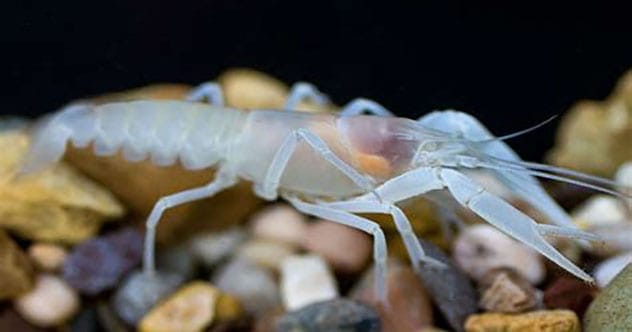Evolution is a fascinating process that leads to incredible adaptations. While many animals rely on their eyesight to navigate the world, some have evolved to thrive without it. These creatures have found innovative ways to survive in their respective environments, proving that sight isn’t always necessary. Let’s explore ten such amazing animals.
Blind Legless Lizard – Dibamus Dalaiensis
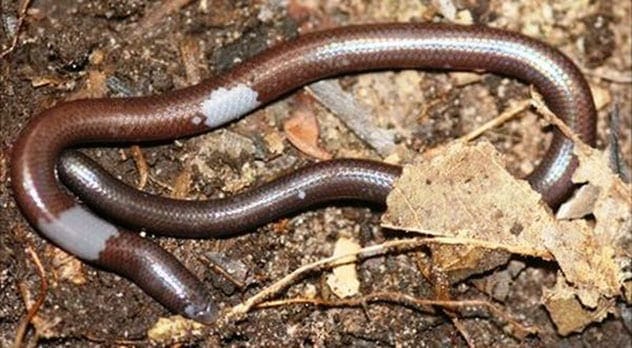
Discovered in 2011, this legless lizard species is completely blind. Found in Cambodia, these lizards belong to the Dibamidae family of blind skinks and share some characteristics with snakes. However, they possess external ears and, depending on their gender, may have small protrusions where legs would typically be. Their adaptation to a life burrowing through the soil made eyes unnecessary. As one researcher noted, eyes would be a “waste of energy” in underground tunnels. Sadly, this species faces threats from logging and other industries in its small habitat on a single mountain in Cambodia.
Brazilian Blind Characid – Stygichthys Typhlops
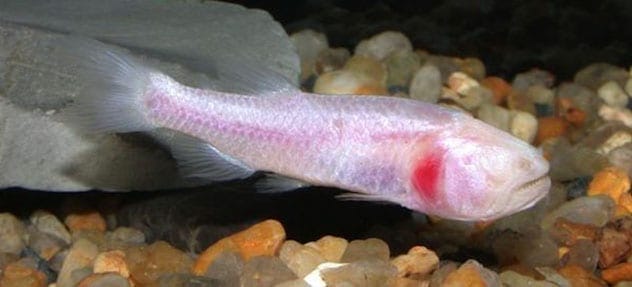
Living in the caves of Minas Gerais, Brazil, the Brazilian Blind Characid, is a cave-adapted fish that has evolved to live without eyes or pigmentation. These small fish, reaching lengths of up to 1.8 inches, lead solitary lives in cave ponds. Their numbers in the wild are dwindling due to a decreasing water table, which has caused ponds and streams to dry up. Despite their decline, they are sometimes kept as pets in aquariums. They show no reaction to light and have no visible eyes. Confined to a 25km-long aquifer, they are endangered by habitat loss caused by the lowering water table.
Kentucky Cave Shrimp – Palaemonias Ganteri
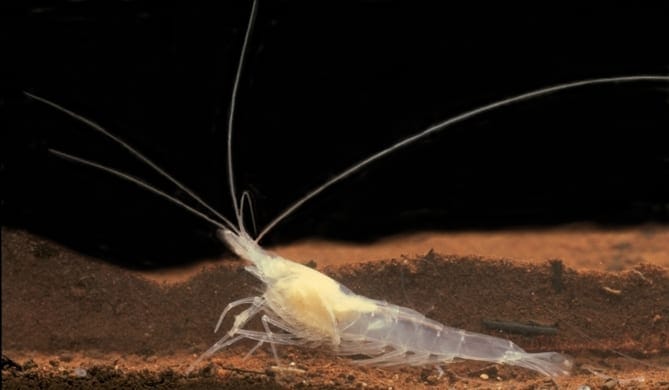
The Kentucky Cave Shrimp, a freshwater species of troglobite shrimp, resides in the caves of several Kentucky counties. This species lacks eyes and pigment, making it almost entirely transparent. They inhabit underground streams in caves, particularly within Mammoth Cave National Park. They thrive in low-energy environments by feeding on sediment washed into the cave via groundwater. This sediment is rich in protozoans, fungi, algal cells, and other organic materials. Unlike most shrimp species with eyestalks, the Kentucky Cave Shrimp has evolved without any means of sensing light. Sadly, their limited range and deteriorating water quality due to groundwater contamination threaten their survival. Conservation efforts are underway to protect these unique creatures.
Olm – Proteus Anguinus
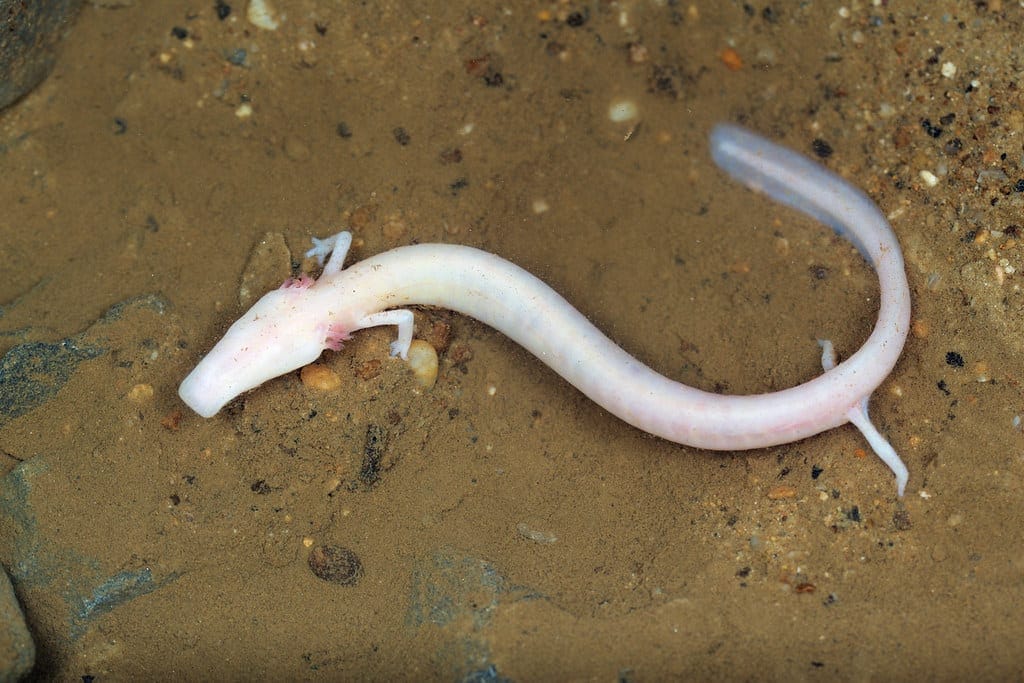
The Olm is an aquatic salamander and the only cave-dwelling chordate in Europe. Entirely aquatic, it lives in the caves of the Dinaric Alps, feeding, sleeping, and breeding underwater. Its fleshy skin has earned it the nickname “human fish.” First identified in 1689, Olms were initially believed to be the offspring of cave dragons. While they do possess eyes, they are undeveloped and can’t perceive light. Instead, the Olm relies on its senses of smell and hearing to navigate its dark habitat. Their eyes appear as small slits covered by transparent skin. They also have small limbs with a unique toe arrangement and lack pigmentation, giving them an earthworm-like appearance.
Kaua’i Cave Wolf Spider – Adelocosa Anops
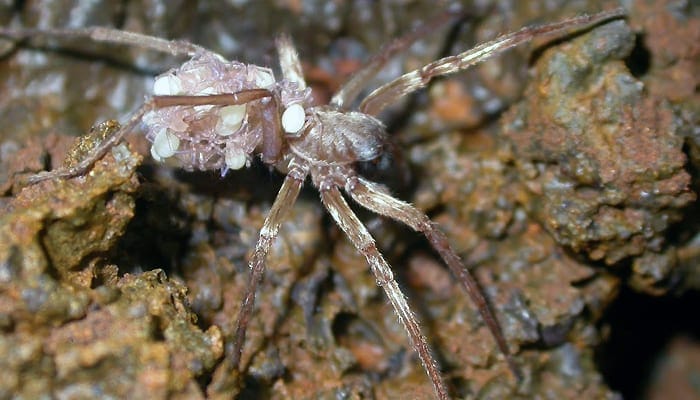
The Kaua’i Cave Wolf Spider is a blind spider found exclusively in a few caves in the Koloa–Po’ipu region of Kaua’i, Hawaiian Islands. Unlike their above-ground relatives with large eyes, these spiders have evolved to live without them. They are harmless to humans, preying almost exclusively on a small amphipod found in their environment. These spiders are endangered due to habitat loss and deterioration caused by human activities, including chemical and biological pest controls that decimate their prey. Efforts are ongoing to limit habitat loss and ensure their survival.
Widemouth Blindcat – Satan Eurystomus
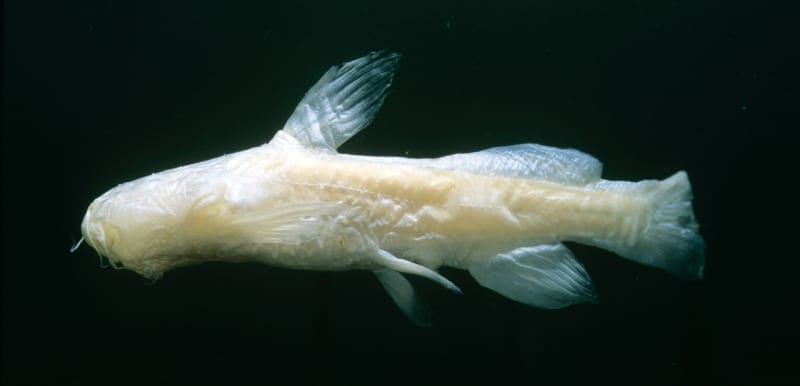
The Widemouth Blindcat, a Texas catfish and the only member of the genus Satan, was first discovered in a dark well, indicating its evolution in a lightless, subterranean environment. Found in just five artesian wells near San Antonio, Texas, these catfish lack pigmentation and visible eyes. They do have eye remnants, suggesting they once had eyes but no longer need them. These remnants are significantly reduced, with little trace of a retina or lens. Though smaller than typical catfish, they are top-tier predators, feeding on crustaceans. Groundwater contamination has led to their listing as vulnerable, necessitating conservation efforts to protect this unique species.
Blind Albino Cave Crab – Munidopsis Polymorpha
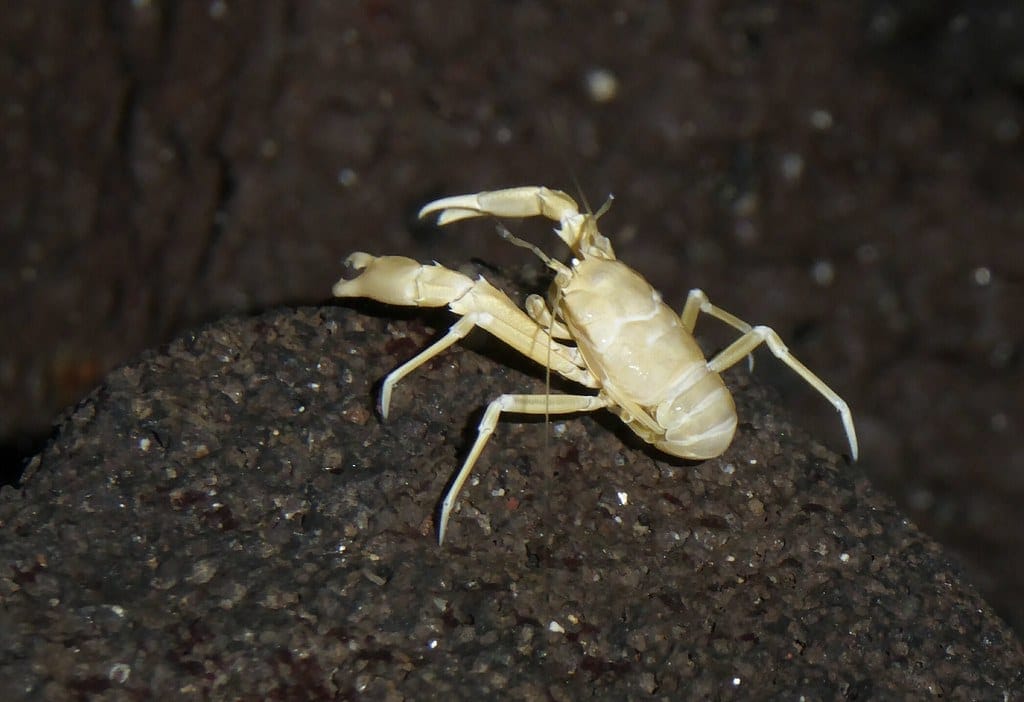
The Blind Albino Cave Crab is a species of squat lobster found only in the caves of Jameos del Agua in Lanzarote, Canary Islands. These small, pale, and completely blind creatures live exclusively in lava tubes formed thousands of years ago. They are unique to this environment, and little is known about them since their discovery in 1892. Despite the lack of information, they are the animal symbol of Lanzarote. These crabs resemble tiny lobsters, lacking pigmentation and eyestalks. They navigate using their senses of smell, taste, and touch. Unlike many species on this list, they are not currently listed as threatened.
Southern Cave Crayfish – Orconectes Australis
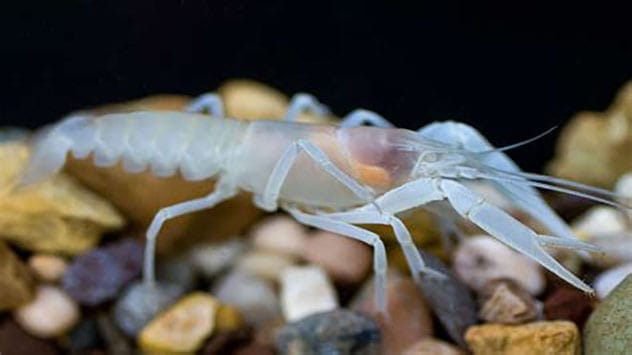
The Southern Cave Crayfish is notable for its impressive lifespan, with some individuals living over 100 years, and one recorded to be over 176 years old! This crayfish lacks pigmentation, making it translucent, and has no eyes or reaction to light. Found in subterranean cave waters of Alabama and Tennessee, it is currently listed as being of least concern. Reaching lengths of up to 1.8 inches, they have adapted to their dark surroundings and subsist on small fish, insects, and sediment washed in by groundwater. They are commonly found clinging to walls and buried beneath rocks.
Mexican Tetra – Astyanax Mexicanus
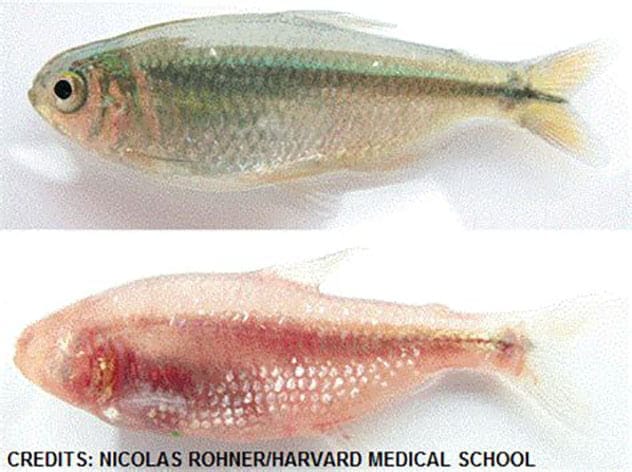
The Mexican Tetra, a characin species, inhabits freshwaters in Texas and Mexico. Growing up to 4.7 inches, this tetra has no pigmentation or eyes. Popular among aquarists, they are often kept in cave-style tanks with minimal light. Originally, these fish had eyes, like their surface-dwelling counterparts, but they evolved to lose them over time. This is because energy conservation is crucial in their environment. Studies suggest that the energy cost of sight is 15 percent greater for young fish than for blind ones. To compensate, they consume everything they encounter, including dead animals and plants.
Texas Blind Salamander – Eurycea Rathbuni
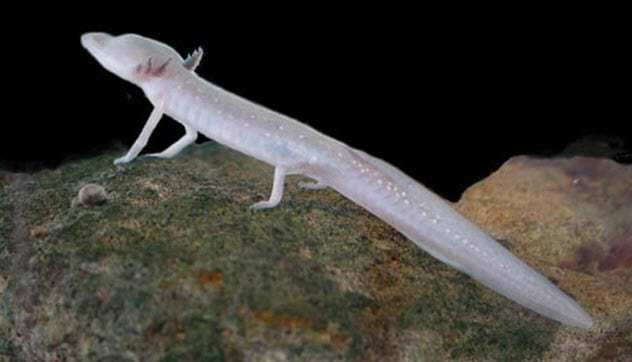
The Texas Blind Salamander is an incredibly rare troglobite amphibian found only in San Marcos, Texas. Living in the San Marcos Pool of the Edwards Aquifer, they can grow up to 5 inches long. Their diet includes blind shrimp, snails, small fish, and anything else that flows into their dark habitat. First identified in 1895, they have been studied in seven locations around San Marcos. Lacking eyes, with only subdermal sightless black dots, these salamanders hunt by sensing water movement. Their rarity and the pollution of groundwater in their area has led to a population decline, and the IUCN has listed them as vulnerable, with conservation efforts underway.
These ten animals showcase the remarkable adaptability of life on Earth. Without the need for sight, they have evolved unique strategies to thrive in their environments. What do you think? Leave your comment below!


